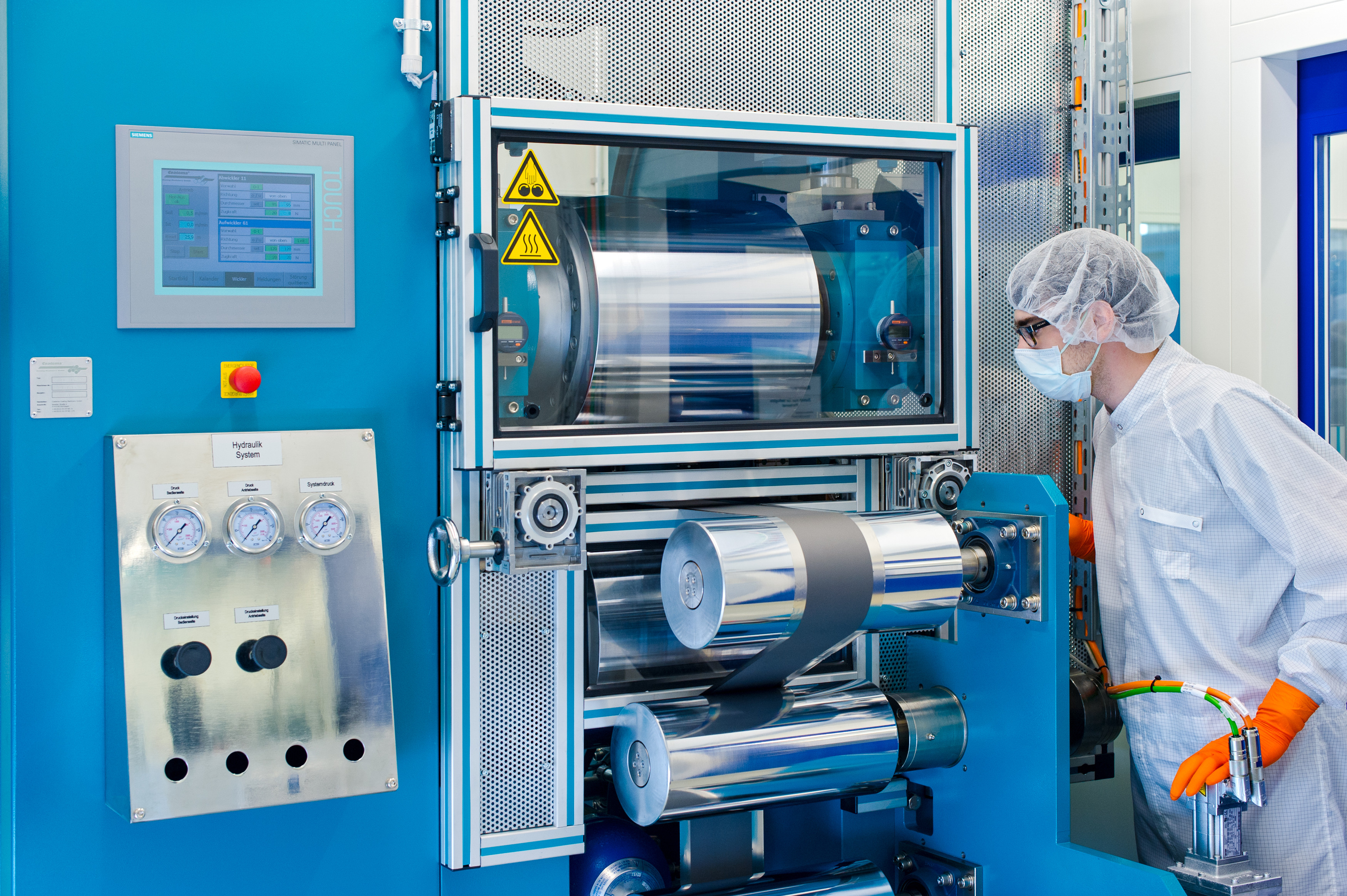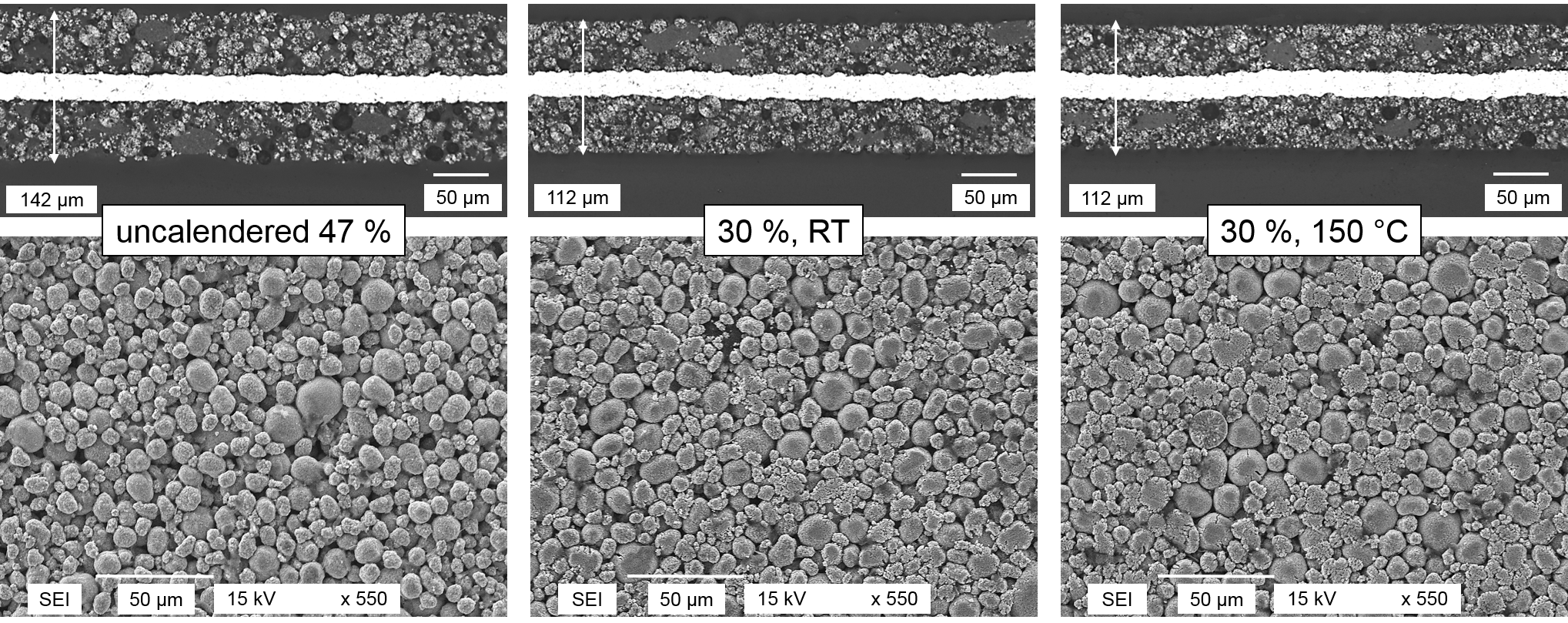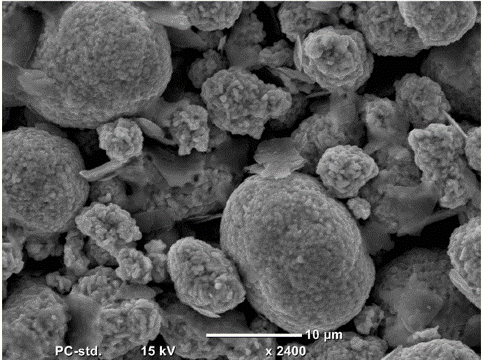MiKal - Optimum electrode structure and density through integrated design of mixing and calendering processes
Due to the integrated design of the mixing and calendering process, electrodes with higher volumetric energy density are produced in the project MiKal with the stable electrochemical performance. In addition, a DEM simulation model for process design will be developed and the deformation behavior of the electrodes will be analyzed. The aim is to enable the identification of advantageous calendering conditions as well as the prediction of machine settings and the product structure.
Project description
Electrochemical energy storage is becoming increasingly important. As a result of the German energy transition, energy storage for electric vehicle applications is a particular focus. Due to the limited installation space, a high volumetric and grav-imetric energy density is decisive. On electrode level the compaction process of the coating, the calendering process, has a crucial influence of the volumetric energy density.
This project focuses on the determination of the interaction of mixing processes, the resulting machine and product calendering behavior as well as the generated and performance-determining microstructure of the electrodes. This should enable the identification of optimal calendering conditions and the prediction of both the machine settings and product structure settings. For this purpose, electrodes with different conductive agent structures will be adjusted by varying the mixing intensity, the mixer types and different combinations of conductive agents (with constant total content). The aim is to derive an optimized recipe for energy electrodes and to investigate their compaction behavior, especially the interaction with the substrate. The interdependency between mixing and calendaring process is emphasized with the aim to achieve volumetrically higher energy densities with high performance. Complementary to the empirical examination, DEM simulation models will be developed to predict structural evolution and process design. Throughout the project, the 3D microstructure will be reconstructed for selected electrodes. FIB/SEM (sub-μm scale conductive agent structure) as well as XMT (μm scale particle and conductive agent agglomerates) will be used for a holistic view of the electrode structure. Important evaluation criteria during the project are methods of structural, mechanical and electrical characterization as well as electrochemical analyzation in full- and half-cells.





